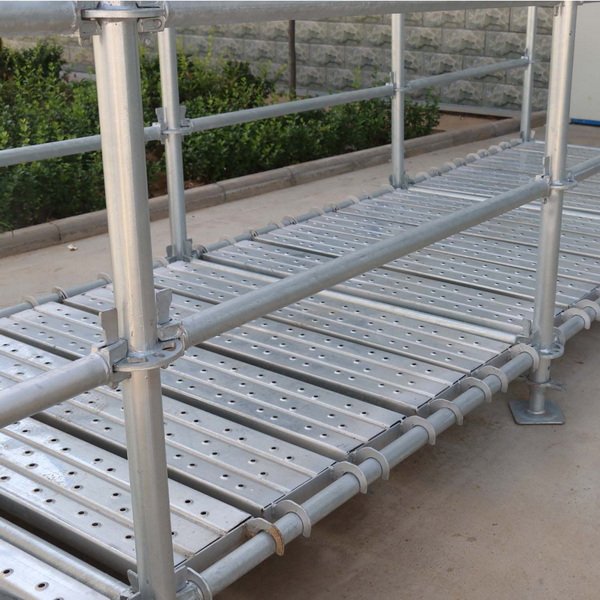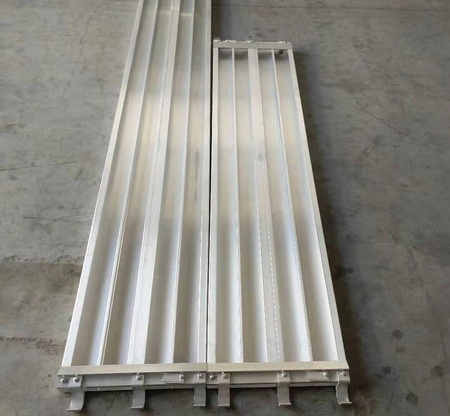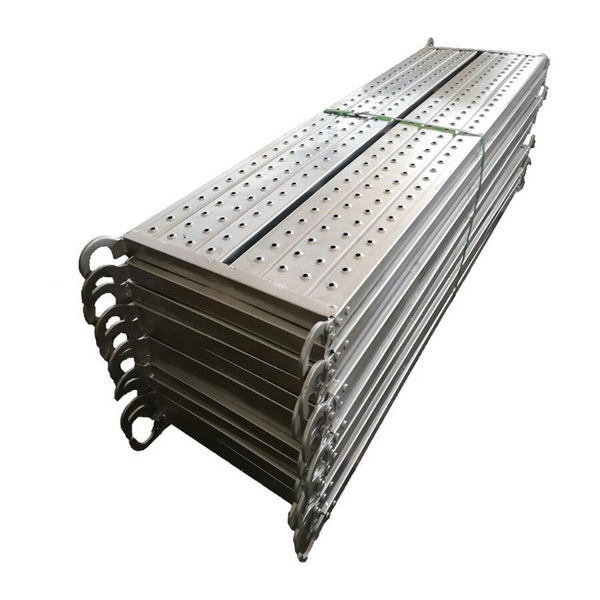Content Menu
● Introduction to Aluminum Scaffold Planks
● Benefits of Aluminum Scaffold Planks
● Types of Aluminum Scaffold Planks
● Applications of Aluminum Scaffold Planks
● Choosing the Best Aluminum Scaffold Plank for Your Project
● Safety Considerations
● Maintenance of Aluminum Scaffold Planks
● Environmental Impact
● Comparison with Other Materials
● Conclusion
● FAQ
>> 1. What are the main benefits of using aluminum scaffold planks?
>> 2. What types of aluminum scaffold planks are available?
>> 3. How do I choose the right aluminum scaffold plank for my project?
>> 4. Are aluminum scaffold planks suitable for heavy-duty applications?
>> 5. How often should I inspect aluminum scaffold planks?
● Citations:
Aluminum scaffold planks have become a crucial component in the construction industry due to their lightweight, durable, and corrosion-resistant properties. These planks are essential for providing a safe and stable platform for workers to perform tasks at heights. In this article, we will explore the benefits, types, and applications of aluminum scaffold planks, as well as how to choose the best one for your project.

Introduction to Aluminum Scaffold Planks
Aluminum scaffold planks are made from high-quality aluminum materials, typically 6061-T6, known for its high strength-to-weight ratio and corrosion resistance. They offer superior strength compared to traditional wood and steel planks, making them ideal for various construction projects.
Benefits of Aluminum Scaffold Planks
1. Lightweight and Easy to Handle: Aluminum planks are significantly lighter than wood and steel, reducing the risk of accidents during handling and installation.
2. Durability: Aluminum planks are designed to withstand harsh conditions, including moisture and chemicals, ensuring a longer lifespan.
3. Corrosion Resistance: Aluminum naturally forms a protective oxide layer that prevents corrosion, making it ideal for use in various environments.
4. Cost-Effectiveness: Although aluminum planks have a higher initial cost, their long lifespan and low maintenance requirements make them cost-effective in the long run.
5. Versatility: Aluminum planks can be used in a variety of scaffolding systems, including steel ringlock and frame scaffolding.
Types of Aluminum Scaffold Planks
There are several types of aluminum scaffold planks available, each designed for specific applications:
1. All Aluminum Planks: Made entirely of aluminum, these planks offer superior strength and durability.
2. Aluminum and Plywood Planks: These combine the strength of aluminum with the cost-effectiveness of plywood, providing a versatile solution for various applications.
3. Aluminum Planks with Trapdoor and Ladder: These planks are equipped with a trapdoor and ladder for convenient access and use in various scaffolding systems.
4. Aluminum and Plywood Planks with Trapdoor and Ladder: These composite planks feature an aluminum frame and a plywood surface, designed with a trapdoor and ladder for easy access.
Applications of Aluminum Scaffold Planks
Aluminum scaffold planks are suitable for a wide range of applications:
- Steel Ringlock Scaffold Systems: Aluminum planks are compatible with steel ringlock scaffolding, providing a secure and stable platform.
- Steel Frame Scaffolding: These planks are ideal for use with steel frame scaffolding systems.
- Residential and Commercial Construction: Suitable for both residential and commercial building projects due to their versatility and durability.
- Maintenance and Repair Work: The lightweight and strong nature of aluminum planks makes them suitable for maintenance and repair tasks.
Choosing the Best Aluminum Scaffold Plank for Your Project
When selecting an aluminum scaffold plank, consider the following factors:
1. Project Requirements: Determine the load capacity and durability needed for your project.
2. Scaffolding System Compatibility: Ensure the plank is compatible with your scaffolding system.
3. Budget: Balance the initial cost with long-term benefits.

Safety Considerations
Safety is paramount when using scaffolding planks. Ensure that:
- Platforms are Wide Enough: For light duty, platforms should be at least two planks wide; for medium duty, four planks wide; and for heavy duty, five planks wide.
- Regular Inspections: Conduct regular inspections to ensure all components are secure and in good condition.
Maintenance of Aluminum Scaffold Planks
Aluminum planks require minimal maintenance due to their corrosion-resistant properties. However, regular cleaning can help maintain their appearance and ensure safety:
- Cleaning: Aluminum planks can be easily cleaned with water and mild detergents.
- Inspection: Regularly inspect for any signs of wear or damage.
Environmental Impact
Aluminum scaffold planks contribute to sustainability by reducing waste and environmental impact:
- Recyclable: Aluminum is fully recyclable, reducing waste and conserving natural resources.
- Long Lifespan: The durability of aluminum planks means fewer replacements are needed, further reducing waste.
Comparison with Other Materials
Aluminum scaffold planks offer several advantages over traditional materials like wood and steel:
- Lightweight: Aluminum planks are significantly lighter than steel and easier to handle than wood.
- Durability: Aluminum planks are more resistant to corrosion and wear compared to steel and wood.
- Cost-Effectiveness: Although initially more expensive, aluminum planks are cost-effective due to their long lifespan and low maintenance.
Conclusion
Aluminum scaffold planks offer numerous advantages over traditional materials, making them a preferred choice for many construction projects. Their lightweight, durable, and corrosion-resistant properties ensure safety and efficiency on the job site. By understanding the different types and applications of aluminum scaffold planks, you can choose the best option for your project.

FAQ
1. What are the main benefits of using aluminum scaffold planks?
Aluminum scaffold planks are lightweight, durable, corrosion-resistant, and easy to handle, making them ideal for various construction projects.
2. What types of aluminum scaffold planks are available?
Types include all aluminum planks, aluminum and plywood planks, and planks with trapdoors and ladders.
3. How do I choose the right aluminum scaffold plank for my project?
Consider project requirements, scaffolding system compatibility, and budget when selecting an aluminum scaffold plank.
4. Are aluminum scaffold planks suitable for heavy-duty applications?
Yes, aluminum planks can be used for heavy-duty applications, but ensure they meet the required load capacity and are used with appropriate scaffolding systems.
5. How often should I inspect aluminum scaffold planks?
Regular inspections are crucial to ensure all components are secure and in good condition, ideally before each use.
Citations:
[1] https://www.tp-scaffold.com/what-are-aluminum-scaffolding-planks.html
[2] https://www.tytruss.com/newsclass_2/Using-Scaffolding-Aluminum-Planks.shtml
[3] https://staraluminiumscaffolds.com.au/what-are-aluminium-planks-and-their-benefits-2/
[4] https://aaitscaffold.com/blog/the-many-advantages-of-aluminium-planks-in-construction/
[5] https://gwequip.com.au/the-ideal-situations-and-benefits-of-using-mobile-aluminium-scaffold/
[6] https://hi-pointscaffolding.co.uk/blog/what-are-the-advantages-of-aluminium-scaffolding/
[7] https://gwequip.com.au/are-aluminium-scaffolds-expensive-understanding-their-features-and-benefits/
[8] https://jumplyscaffolding.com/aluminum-scaffold/






















